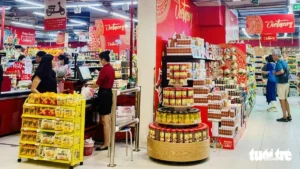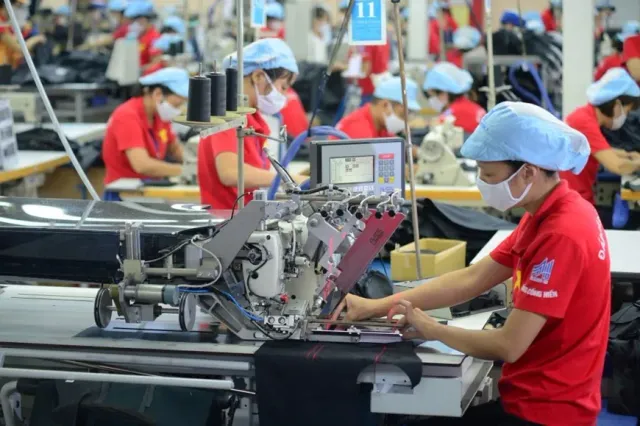The fourth quarter is always considered a key period for export manufacturing industries.
This is both a sprint to complete the business goals of the year and a stepping stone to sign new contracts for next year. Most businesses said that the situation at the end of this year is quite positive and are trying to ensure stability for next year.
This fourth quarter is considered the peak export production period for textile, garment and footwear enterprises. For example, this garment enterprise has seen its year-end export orders increase by more than 10% compared to the same period last year and exceed its production capacity by 15%.
Mr. Than Duc Viet – General Director of Garment Corporation 10 said: “We can only recruit about 30% of the number we want. Therefore, we compete in production to increase productivity for the current workforce, completing orders that are beyond our capacity.”
At the end of the year, there is a lot of goods, a lot of work, and no increase in human resources, so everything must be calculated reasonably. In this company’s warehouse, the amount of imported raw fabric must be calculated to match the time so that it can be exported at the same time. This reduces both storage time and loading and unloading effort.
The end of this year is good, but the beginning of the new year is still a question mark for many businesses. Many customers are waiting until the end of November to finalize orders for the first quarter of next year.
Mr. Do Ngoc Hung – Vietnam Trade Counselor in the US shared: “This also comes from the demand of the US market, especially in the last months of 2024, the demand for essential goods to prepare for the holidays and the end of the year as well as increasing the inventory of US importers and distributors, especially in the context of the US Presidential election in November”.
Vietnamese goods have the advantage of reasonable prices and guaranteed quality. Many major brands in the world are shifting to Vietnam to place production orders. However, to catch up with this shifting trend, businesses also need to have better internal resources.
Ms. Phan Thi Thanh Xuan – Vice President, General Secretary of the Vietnam Leather, Footwear and Handbag Association commented: “On the part of enterprises, we must apply new technology in management, switch to applying automated equipment in stages to replace simple labor. That is one of the weaknesses of our enterprises today”.
Next year, foreign markets will impose new regulations on imports. For example, manufacturers will have to report their emissions. More broadly, goods will have to be sustainable from source to finished product before they can be exported.
















